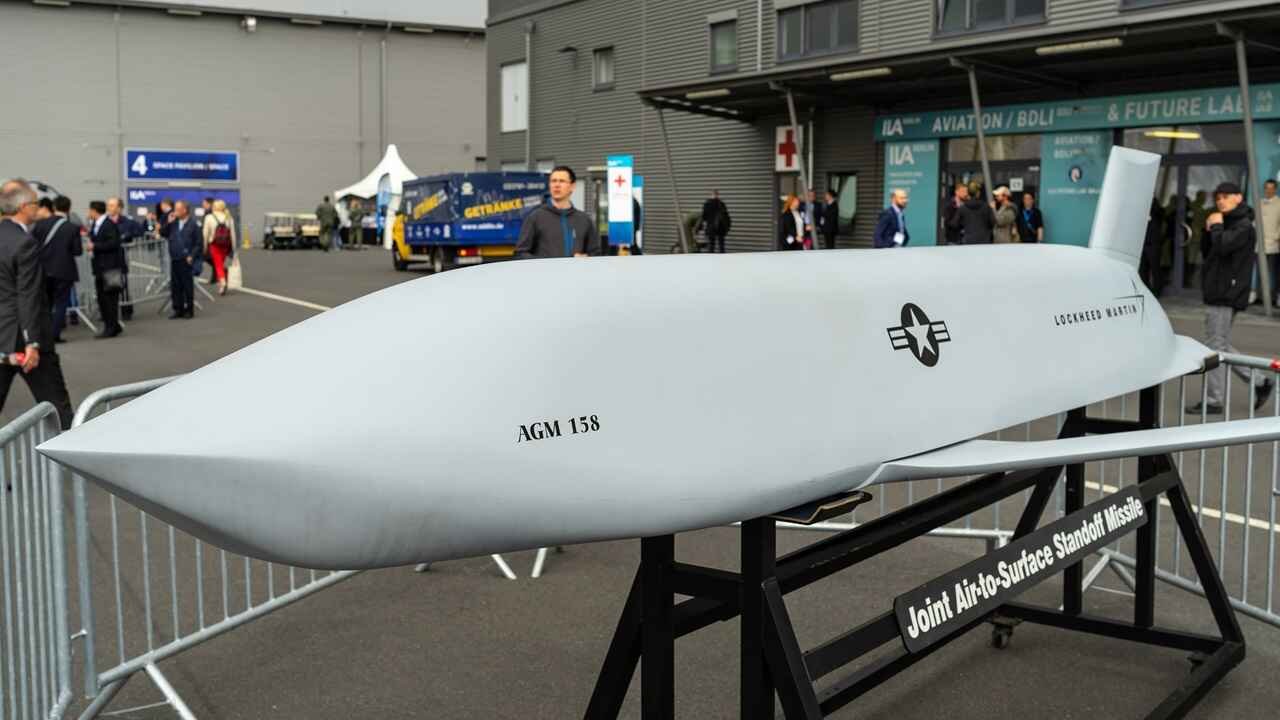Tokyo is making these bold moves in response to what they rightly perceive as Beijing’s growing threat.
The Defense Security Cooperation Agency reported on January 15, 2025, that the outgoing Biden administration had approved the potential sale of Joint Air-to-Surface Standoff Missiles with Extended Range (JASSM-ER) to the Japanese military. This is yet another sign that Japan’s post-World War II “Peace Constitution” is no longer a practical document.
In the last decade alone, Tokyo has made radical, albeit informal, changes in the interpretation of their constitution to allow for the procurement of things like aircraft carriers (which they refer to as “helicopter-destroyers”) or now these JASSM-ER missiles.
Tokyo is making these bold moves in response to what they rightly perceive as Beijing’s growing threat. What’s more, with South Korea essentially sidetracked with a domestic political dispute, and thanks to Russia’s increased support, North Korea has been let out of its cage—and is flexing its geopolitical muscles.
Both China and North Korea represent real dangers to Japan, and Tokyo needs more than assurances from an increasingly ambivalent Washington to protect them from these growing threats.
The Stockpile Grows
Worth an estimated $39 million, this is the second round of JASSM-ER missiles that Japan acquired from their partners in the United States. Japan initially procured around 50 units of these weapons in 2024. They are slated to buy even more. These weapons are a key asset in deterring the aggression of Chinese and North Korean forces.
A relatively new weapon system, the JASSM-ER was developed for the United States Air Force (and its international partners) and deployed in 2014. It is a significant upgrade in terms of range and capabilities over the original JASSM that was deployed in 2003, just in time for America’s ill-fated invasion of Iraq.
The JASSM-ER’s Specs
What makes the JASSM-ER especially useful for Japan is the extended range of the missile. The range on the JASSM-ER is more than 1,200 miles. That’s because this weapon has an internal fuel tank and a more efficient turbofan engine than does its immediate predecessor, the JASSM.
By extending the range of the JASSM-ER, American designers helped to better protect the launching craft from retaliation. Further, in the age of anti-access/area-denial (A2/AD), being able to hit enemy targets will have to be done reliably at greater distances than in previous wars.
Possessing an arsenal of JASSM-ER missiles will help Japan do that—especially because China has created a dynamic A2/AD capability that stretches across the Indo-Pacific.
Another aspect of the JASSM-ER is the fact that it is designed to be stealthier than its JASSM predecessor. The weapon has a low-observable airframe that can defeat most advanced air defenses. By relying on an INS/GPS guidance system for navigation, that is augmented with an infrared seeker for terminal guidance, the JASSM-ER is extremely accurate.
JASSM-ER missiles can store up to eight, three-dimensional targeting models for precision strikes, too. Enemy forces being targeted by this weapon are unlikely to evade them, given the precision involved with its targeting systems.
These missiles are designed to be launched from a variety of platforms. The B-1B Lancer, B-2 Spirit long-range stealth bomber, the B-52H Stratofortress, the F-15E Strike Eagle, the F-16 C/D, and is slated for future integration with the F-35 Lightning II. Thus, the JASSM-ER is potent weapon to field for any military, especially a relatively small and surrounded one, like the Japanese Self-Defense Force.
Lockheed Is Already Developing the JASSM-ER’s Successor
As for the efficacy of the JASSM-ER, it has already been used in combat. Indeed, it was previously used against targets in Syria during America’s successful campaign against ISIS—particularly in decapitating strikes against key ISIS leaders in the region.
Because of the JASSM-ER’s potency and its potential, Lockheed Martin keeps investing in this system. One thing that Lockheed engineers keep mentioning is the development of the AGM-158D JASSM-XR. This system is meant to extend the range of the missile to an astonishing 1,500 miles, showing just how important the JASSM family is for the future of the U.S. and allied arsenals—especially against targets protected by A2/AD.
About the Author: Brandon J. Weichert
Brandon J. Weichert, a Senior National Security Editor at The National Interest as well as a Senior Fellow at the Center for the National Interest, and a contributor at Popular Mechanics, consults regularly with various government institutions and private organizations on geopolitical issues. Weichert’s writings have appeared in multiple publications, including the Washington Times, National Review, The American Spectator, MSN, the Asia Times, and countless others. His books include Winning Space: How America Remains a Superpower, Biohacked: China’s Race to Control Life, and The Shadow War: Iran’s Quest for Supremacy. His newest book, A Disaster of Our Own Making: How the West Lost Ukraine is available for purchase wherever books are sold. He can be followed via Twitter @WeTheBrandon.
Image: Shutterstock.
